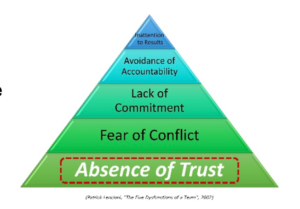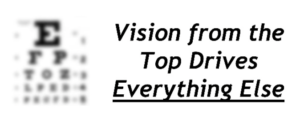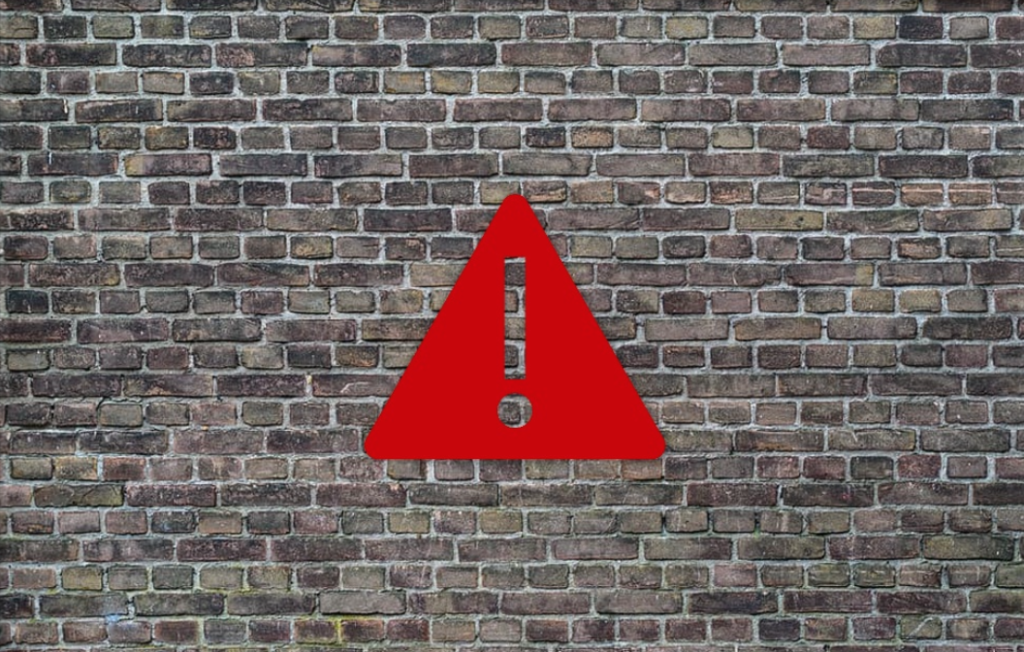 Many organizations get so caught up in what they currently do and how they do it, that they cannot find ways to effectively improve how they operate and experience the growth that stems from that kind of change. Plotting a path to organizational growth, especially based on the projects it chooses to execute, can be a challenge. The fundamental elements are not overly complicated, but the work to make the change is hard.
Many organizations get so caught up in what they currently do and how they do it, that they cannot find ways to effectively improve how they operate and experience the growth that stems from that kind of change. Plotting a path to organizational growth, especially based on the projects it chooses to execute, can be a challenge. The fundamental elements are not overly complicated, but the work to make the change is hard.
Stripping back the veneer of “pretend change” and finding how execution Value comes from properly communicated Vision and choices rooted in those fundamental elements often takes fresh eyes and a willingness to do things in a very different way. It can be a bit unnerving, but the alternative is stagnation.
Through this series of articles, we’ll highlight and discuss some of the fundamental elements that are necessary to effect real growth and improvement that is sustainable, and weed out the things that only add noise and distraction.
Barriers are present everywhere. Many of them are helpful as they protect us from unwanted consequences. For example, our driving is full of necessary barriers, both passive and active, the focus on safety and avoid or eliminate changes that would cause damage to our vehicles, property around us, or even ourselves.
 But, when you are seeking change that leads to organizational growth, barriers usually hinder progress and impede the change that can lead to growth. And growth of that nature is usually vital to advancing the organization. In this article, we’ll examine five barriers to change that you likely need to overcome if you are going to grow.
But, when you are seeking change that leads to organizational growth, barriers usually hinder progress and impede the change that can lead to growth. And growth of that nature is usually vital to advancing the organization. In this article, we’ll examine five barriers to change that you likely need to overcome if you are going to grow.
Trust at the Core (or an Absence of Necessary Trust)
Much has been written and discussed about Patrick Lencioni’s book “The Five Dysfunctions of a Team”. The author begins with a base dysfunction of “Absence of Trust” and builds upon that theme as he spins this effective (and accurate) leadership fable. The antithesis is a foundation of trust within an organization and team that provides a solid basis for building toward a positive future.
In relatively simplistic terms, that trust that is so vital to growth and change can be represented in three progressive layers: initial granted (but not guaranteed) trust, continuously earned trust, and sustainable trust that ensures the solid foundation and earned trust are kept intact as an organization grows. Most organizations that face challenges with growth and change lack that fundamental building block of trust. If that is a barrier for your team or organization, the other barriers won’t really matter that much. Trust is so fundamental that without it, you will always find yourself trying to change but failing. Plus, you’ll find your best resources will walk away and look for an environment where they feel trusted with the outcomes they are chartered to produce.
Where There is No Vision
An ancient proverb says a lack of vision leads to people perishing. Well, citing that out of context (which is often done) tees up the main point, but it doesn’t really speak to the heart of the matter. Vision as a catalyst for organizational change is a critical building block. The problems start when the Vision isn’t clear, cohesive, communicated from the absolute top of the organization, or constantly and consistently communicated.
 The basic elements of “Flow” as a framework (we’ll discuss that in more detail throughout this series of articles) include Vision from the top of the organization that governs and drives Value for every initiative, project, and operational aspect. In order for an organization to grow and improve, that Vision needs to be present at all times, as it drives out Mission, Purpose, and Strategy that frame and guide any successful efforts. Failing to have Vision (and all that stems from it), change won’t have clear direction or support the growth an organization desires to move forward toward future goals. In fact, those goals will probably be “fuzzy” at best.
The basic elements of “Flow” as a framework (we’ll discuss that in more detail throughout this series of articles) include Vision from the top of the organization that governs and drives Value for every initiative, project, and operational aspect. In order for an organization to grow and improve, that Vision needs to be present at all times, as it drives out Mission, Purpose, and Strategy that frame and guide any successful efforts. Failing to have Vision (and all that stems from it), change won’t have clear direction or support the growth an organization desires to move forward toward future goals. In fact, those goals will probably be “fuzzy” at best.
Jim Whitt (Purpose Unlimited) says, “If you lack self-awareness you can’t change. Why should you? As far as you’re concerned, you’re doing everything right.” That’s a great definition of stagnancy that results from a nearly complete lack of what is going on around you that is holding you back and keeping you “content” with the stagnant state of things. Change is fine for others, but “We don’t need no stinking changes here!” And the “act” of stagnancy leads to a persistent state of “stagnation”. Your rut becomes your final resting place.
History is full of organizations (and individuals) who were blind to changes around them and, subsequently, didn’t change themselves. The old adage of the most successful buggy whip manufacturer comes quickly to mind. And few of us need to be reminded of missed opportunities from our past (complete with all the “what if” scenarios we allow to take up residence). Then again, the truly complacent, stagnant organization doesn’t even think about what might have been – because their stagnancy permeates their culture. Then they wonder why the world around them changes and their best people go somewhere else (like a competitor).
It’s not Difficult; it’s Just Hard
At the core, there is a distinct difference between change that is “complicated or difficult” and change that is just plain hard. While there are complicated (or at least complex) changes that bring about great advancement, there are far more opportunities to change that are missed or passed over because the organization or individual that would need to make the change just sees it as something too hard to undertake.
Instead, standing on the shoulders of their own complacency and lacking that core Vision, they choose an easier path of status quo. And substantive change doesn’t happen for them. Call it laziness or anything else, but it’s very often masked by statements of “it would be too difficult” when the actual change is very achievable, but it will take discipline and hard work.
History is full of organizations (and individuals) who were blind to changes around them and, subsequently, didn’t change themselves. The old adage of the most successful buggy whip manufacturer comes quickly to mind. And few of us need to be reminded of missed opportunities from our past (complete with all the “what if” scenarios we allow to take up residence). Then again, the truly complacent, stagnant organization doesn’t even think about what might have been – because their stagnancy permeates their culture. Then they wonder why the world around them changes and their best people go somewhere else (like a competitor).
It’s not Difficult; it’s Just Hard
At the core, there is a distinct difference between change that is “complicated or difficult” and change that is just plain hard. While there are complicated (or at least complex) changes that bring about great advancement, there are far more opportunities to change that are missed or passed over because the organization or individual that would need to make the change just sees it as something too hard to undertake.
 Instead, standing on the shoulders of their own complacency and lacking that core Vision, they choose an easier path of status quo. And substantive change doesn’t happen for them. Call it laziness or anything else, but it’s very often masked by statements of “it would be too difficult” when the actual change is very achievable, but it will take discipline and hard work.
Instead, standing on the shoulders of their own complacency and lacking that core Vision, they choose an easier path of status quo. And substantive change doesn’t happen for them. Call it laziness or anything else, but it’s very often masked by statements of “it would be too difficult” when the actual change is very achievable, but it will take discipline and hard work.
Speaking of the Status Quo
For many of the barriers we’ve pointed out, there is a common thread that binds them together. It’s our old friend complacency. It comes in a few different flavors, such as organizational, team, or individual complacency, but it’s there. Consider it a “kissing cousin” to stagnancy. Back to that old buggy whip company that didn’t see the future coming despite all the signs staring them in the face.
Any seasoned sales person or consultant will tell you their number one competitor is the status quo. For a myriad of reasons, companies and people resist change and actively choose to stay as they are. Some realize change is possible and even desirable, yet they won’t face it head-on and end up comfortable with the results (or non-results) of what they are doing now. Perhaps it’s fear of the unknown. Perhaps it’s a completely passive complacency. Perhaps it’s a combination of those and more. But it ends up looking the same as others change and pass by into the future.
But Wait! There’s More!
We’ve briefly discussed five barriers to change. We could go on almost “forever” about other barriers and variations on those themes. But doing that won’t resolve anything. It ultimately comes down to choices – choices to be aware of the barriers and a determination to do something different.
In the next article, we’ll examine a highly simplified “maturity model” and the decisions and actions that can help us plot out a course to substantive change. It’s definitely a journey, and it starts with a choice to change. We hope you’ll join us and provide some feedback as we walk through this series of articles and find out what sustainable change can mean for individuals and organizations.
Mark Moore, M2PCC’s Executive Consultant, is an experienced leader and communicator, with a long track record of successful program and project management, training development and delivery, and transformational change. He brings over three decades of experience spanning multiple industries and disciplines. His focus on delivery of Value aligned with Vision lies at the heart of FLOW and organizational transformation.
Executive Consultant
mark@m2projectconsultingcorp.com
919.724.3679

